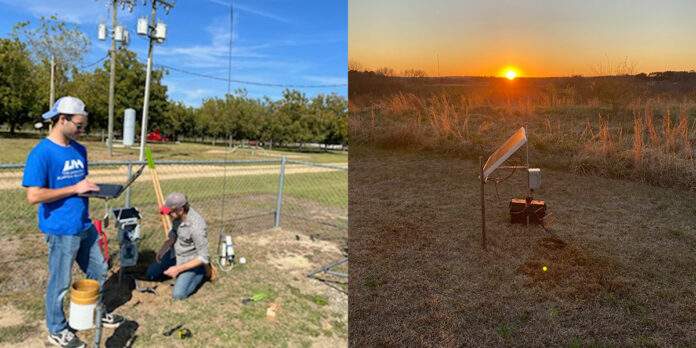HUNTSVILLE – During summer and early fall, the Southeast can experience a few
hot weeks without rain, causing what is known as a “flash drought.” This phenomenon can destroy crops during the growing season.
To help farmers become more drought-resilient, the Earth System Science Center (ESSC) at the University of Alabama in Huntsville is setting up 50 low-cost soil moisture sensors. These sensors will examine how quickly soils dry during growing season dry spells. They also enable farmers to better characterize drought impacts when seeking federal assistance.
Funded by the National Oceanic Atmospheric Administration’s Office of Oceanic and Atmospheric Research’s Weather Program Office, UAH ESSC Associate State Climatologist Dr. Lee Ellenburg is leading the effort to help build a large network of soil moisture sensors across the Southeast.
There are only 18 soil moisture sites installed across Alabama’s 52,000 square miles by the
U.S. Department of Agriculture, leaving large gaps of missing data.
The low-cost sensors, designed by UAH Atmospheric and Earth Science Associate Professor Dr. Udaysankar Nair, will monitor how soil moisture varies across the landscape of Alabama depending on weather events, soil type and vegetation.
So far, Ellenburg and his team have built eight sensors at UAH. Each sensor takes less than 20 minutes to assemble and costs a fraction of the amount it takes to build and install a traditional soil observation site.
As of now, the project is in the evaluation stage. To determine how accurately the data is being captured by the low-cost soil moisture sensors, Ellenburg and his team are installing the sensors near USDA weather instrument sites for a six-month evaluation period. The team is also testing the robustness of the sensors to see if they can withstand inclement weather.
Once the team is confident with the design solution, the sensors will be moved to “stand alone” status.
With the flexibility of placement these sensors offer, Ellenburg and his team will have
assessments to evaluate if the sensors can be placed under canopies of trees or even near prescribed burns.
Ellenburg is also collaborating with the Alabama Forestry Commission to study if the soil moisture data collected from the sensors can anticipate conditions favorable to spark wildfires.
Don’t miss out! Subscribe to our email newsletter to have all our smart stories delivered to your inbox.



